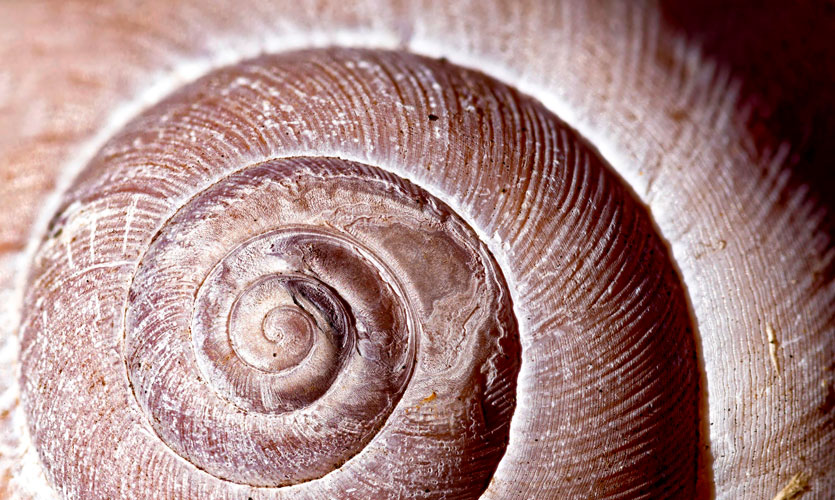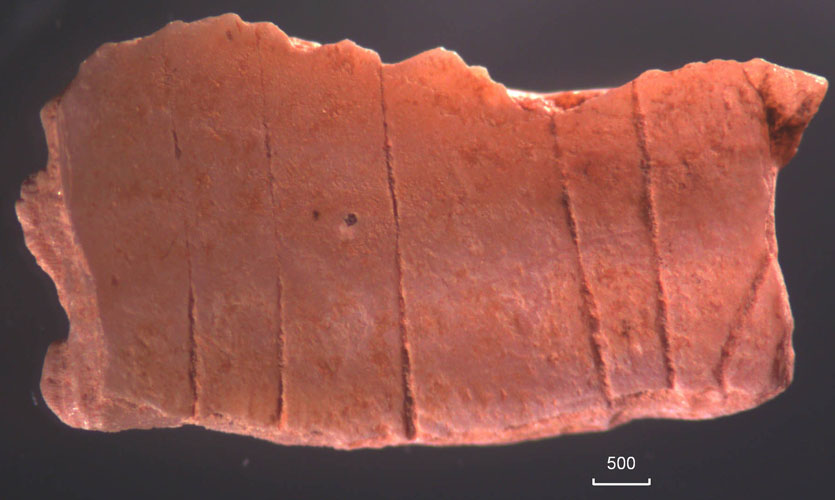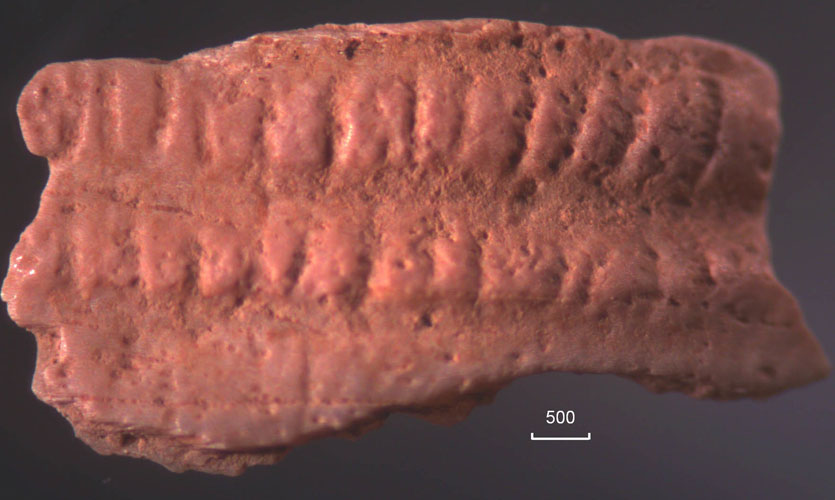Decorated snail shell in a cave in Iraq could be evidence of Paleolithic bling

Our excavations at Shanidar Cave in north-eastern Iraq have produced a tiny shell plaque which was made by the first modern people in the region. This little object seems to have been made to ornament something showy, suggesting a very modern enjoyment of a bit of bling – but it also shows unexpected complexity.
Shanidar Cave in the Zagros Mountains is an important Neanderthal site. It was there in the 1950s that Ralph Solecki, an anthropologist from the Smithsonian Institution, unearthed the remains of ten Neanderthals – eight adult and two infant, thought to be between 65,000 and 35,000-years-old.
Some were complete skeletons but others were only a few bones. He thought most had been purposely buried because of their completeness. One became famous as the “Shanidar flower burial” – after pollen analyst Arlette Leroi-Gourhan found clumps of pollen from plants with medicinal properties in samples taken close to the skeleton.
Since 2014 a joint UK-Kurdish team, led by Graeme Barker, Tim Reynolds and me, with members from Cambridge, Liverpool John Moores, Birkbeck, Queen’s Belfast and the Kurdish Antiquities Department, have been re-investigating the cave. We aim to clarify the sequence of deposits, work out the age of the Neanderthal remains, establish whether they were indeed buried and whether flowers were involved. During this work, our small but careful excavations have yielded large quantities of cultural debris as well as new Neanderthal remains.
The Baradostian
One of our more important finds is a shell plaque from Upper Palaeolithic layers. The local Upper Palaeolithic stone tool industry is called the Baradostian, dating from about 36,000BC – and elsewhere in the region this industry is associated with the remains of anatomically modern humans.
In 2009, American anthropologists Jeremiah Scott and Curtis Marean reported the discovery of butchered and burnt partial remains of two adults and two juveniles at Eshkaft-e Gavi, a cave in the southern Zagros Mountains, in levels containing Baradostian artefacts. Tsenka Tsanova – a Bulgarian stone tool specialist – found a modern human molar in basal Baradostian layers at Warwasi in western Iran. The tooth was in the lowest Baradostian level, so Tsanova concluded that it confirmed the association between modern humans and the Baradostian.
At Shanidar, the Baradostian layers are a couple of metres thick and contain enormous quantities of cultural material, including stone tools, animal bones and land snail shells.
They overlie thick layers containing Middle Palaeolithic Mousterian stone tools (typically made using Levallois removal methods rather than the blade technology of the Upper Palaeolithic) and the now-famous Neanderthals.
The shell plaque
The plaque we found is very small and made of the shell of the land snail Assyriella.
The plaque is nearly rectangular and measures 9.2mm x 4.6mm. Both sides of this object bear incisions which are unlikely to be natural. On the inner side of the shell, they were made in a rectangular pattern using a sharp stone point with a triangular tip. Three of the edges appear to have been snapped off along incisions.

The inner side of the plaque showing incisions (1000 microns = 1 mm). Photo: Chris Hunt
On the outer side of the shell, the incisions cut across the natural striations, but this side shows pitting from contact with a corrosive substance.

Outside of the plaque showing incisions across striations. Scale in microns. Photo: Chris Hunt
Piercing or the removal of the apex of the shell is typical of damage made while eating land snails which were a regular part of the prehistoric diet in this area.
The shell of the land snail is too soft and the object too small for the incisions to have been made while the plaque was being used as an anvil for cutting other material as was suggested for other larger and stronger incised pieces.
We conclude that the piece was produced purposely as part of the making of an object for display.
The shiny, bright white interior of the snail shell would have been conspicuous and we guess that little pieces of shell were snapped off and applied to an item of clothing or a wooden object. This might have given an effect rather like that achieved by the cockney Pearly Kings and Queens – a traditional, largely ageing group of working-class Londoners who take to the streets in clothes highly decorated with mother of pearl buttons.
Highly visual culture
The Upper Palaeolithic in Europe and west Asia is well known for composite technology, using stone set in wooden or bone hafts to make complex tools and weapons. It is marked also by the use of personal ornament, including pierced teeth and shells worn strung or perhaps sewn to clothing.
It is also notable for other visual expressions such as cave paintings for instance at Chauvet Cave in France, statuettes including the Venus of Willendorf, carvings and the use of ochre in burials for instance at Krems-Wachtberg in Lower Austria, and in the UK the so-called Red Lady of Paviland found in Wales and thought to be the oldest remains recovered in the UK. But while the tools and weapons of the period were the result of complex manufacturing processes, the ornamental items so far found have been made from single objects.
We suspect that this little shell plaque is another, highly unusual, manifestation of this tradition of visual display. This may be one of the first cases of Upper Palaeolithic people using composite technology to make ornamental items to make themselves look good.
This article was originally published on The Conversation. Read the original article.


